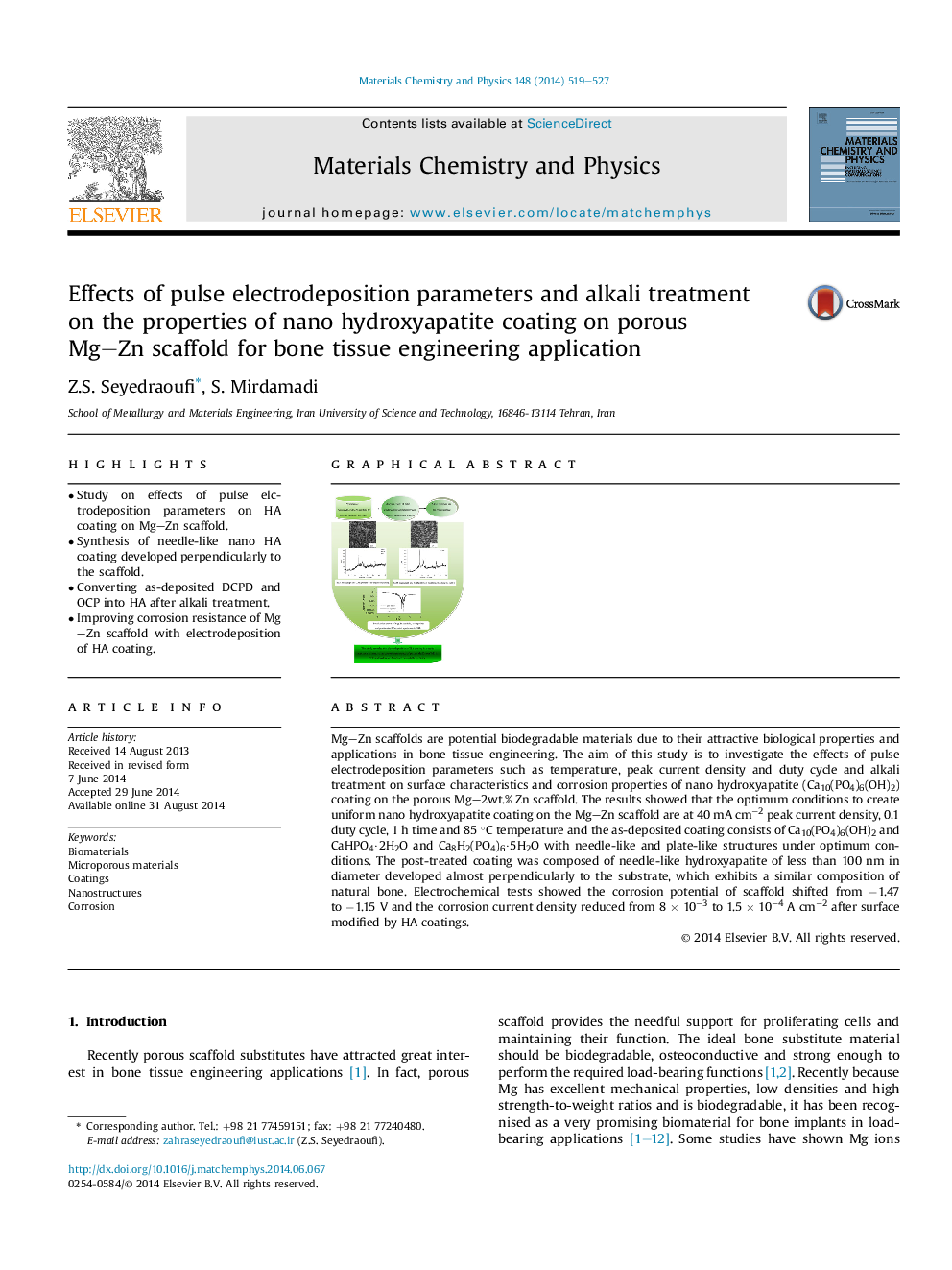| Article ID | Journal | Published Year | Pages | File Type |
|---|---|---|---|---|
| 1521911 | Materials Chemistry and Physics | 2014 | 9 Pages |
•Study on effects of pulse elctrodeposition parameters on HA coating on Mg–Zn scaffold.•Synthesis of needle-like nano HA coating developed perpendicularly to the scaffold.•Converting as-deposited DCPD and OCP into HA after alkali treatment.•Improving corrosion resistance of Mg–Zn scaffold with electrodeposition of HA coating.
Mg–Zn scaffolds are potential biodegradable materials due to their attractive biological properties and applications in bone tissue engineering. The aim of this study is to investigate the effects of pulse electrodeposition parameters such as temperature, peak current density and duty cycle and alkali treatment on surface characteristics and corrosion properties of nano hydroxyapatite (Ca10(PO4)6(OH)2) coating on the porous Mg–2wt.% Zn scaffold. The results showed that the optimum conditions to create uniform nano hydroxyapatite coating on the Mg–Zn scaffold are at 40 mA cm−2 peak current density, 0.1 duty cycle, 1 h time and 85 °C temperature and the as-deposited coating consists of Ca10(PO4)6(OH)2 and CaHPO4·2H2O and Ca8H2(PO4)6·5H2O with needle-like and plate-like structures under optimum conditions. The post-treated coating was composed of needle-like hydroxyapatite of less than 100 nm in diameter developed almost perpendicularly to the substrate, which exhibits a similar composition of natural bone. Electrochemical tests showed the corrosion potential of scaffold shifted from −1.47 to −1.15 V and the corrosion current density reduced from 8 × 10−3 to 1.5 × 10−4 A cm−2 after surface modified by HA coatings.
Graphical abstractFigure optionsDownload full-size imageDownload as PowerPoint slide
